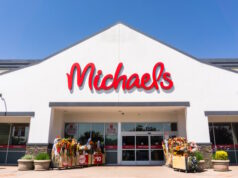
The top savings account rates recently surpassed 5 percent, making it an excellent time for consumers still earning low rates to seek out greener pastures. A rate of 5 percent is effectively more than 20 times the current national average savings account rate of just 0.24 percent.
Rates of 5 percent reflect a significant increase from July 2021, for instance, when the top rate listed among Bankrate’s best high-yield savings accounts was just 0.55 percent.
Despite the high rates being offered today, only 1 in 5 consumers with a savings account currently earns a competitive yield, Bankrate found.
Banks currently paying top-notch rates on savings accounts include:
UFB Direct: The Preferred Savings account from UFB Direct earns 5.02 percent on all balances and requires no minimum deposit amount.
Varo Bank: The savings account offered by Varo Bank earns an annual percentage yield (APY) of 5 percent on balances of up to $5,000 when direct deposit and balance requirements are met. You’ll earn an APY of 3 percent on any additional balance portion above $5,000. No monthly fee is charged.
Salem Five Direct: The eOne Savings account from Salem Five Direct earns an APY of 4.61 percent on balances of up to $1 million, and it requires just $10 to open.
Bread Savings: Bread Savings offers a high-yield savings account that earns a 4.5 percent APY that charges no monthly fee and has a minimum opening deposit of $100.
CIT Bank: The Savings Connect account from CIT Bank earns a 4.5 percent APY, requires $100 to open and doesn’t charge a monthly service fee.
Note: Annual percentage yields (APYs) shown are as of April 5, 2023.
All savings accounts monitored by Bankrate are ensured by the Federal Deposit Insurance Corp. (FDIC) or the National Credit Union Share Insurance Fund (NCUSIF). This guarantees consumers that their money is safe, as long as it’s within the established limits and guidelines.
Why savings account rates are increasing
Savings account rates are loosely tied to the rates the Federal Reserve sets, and the Fed has raised its target for the federal funds rate twice so far in 2023, as well as seven times in 2022.
When the U.S. central bank raises its rate, banks offering top rates tend to increase their savings account yields as well. The average savings account interest rate has tripled since the Fed started hiking rates in March 2022. What’s more, returns on savings accounts are at a 15-year high, Bankrate data shows.
The Fed may choose to raise interest rates to try and help reduce high inflation. Raising its federal funds target rate can effectively increase the cost of borrowing for consumers and businesses. While that means higher interest rates on loans, it also may help savers by causing an increase in savings account interest rates.
Overall, the best savings account yields can be found at online banks, which often have the ability to pay higher yields since they don’t have the overhead costs of maintaining branches. While many big banks continue to pay rock-bottom yields on their savings accounts, it’s possible to shop around and find competitive rates at some brick-and-mortar banks and credit unions.
Why a savings account is a good idea
Whether you want to save for emergencies or other financial goals, a savings account is a safe place for your money that keeps it easily accessible. A savings account complements a checking account as a place to earn some interest on money that’s not needed for bills or other regular expenses.
Savings accounts are often easy to open, and many don’t charge maintenance fees or require a set minimum balance amount.
A savings account is often the best place for your emergency fund, so you’ll have access to money in the event of unplanned expenses such as a medical bill, a car repair or an unexpected job loss.
Another use for a savings account is to store funds you’re saving for upcoming planned purchases, such a vacation, a home improvement project or a down payment on a car.
Bottom line
Everyone can benefit from having a federally insured, high-yield savings account, since it’s a safe place to keep your money while earning some interest. It’s usually simple to transfer funds to a savings account from a checking account or another savings account, which can make it easy to add to the balance and earn more interest.
In all, the competitive rates currently offered on many high-yield savings accounts make it worth shopping around to find the best one for you.
This article originally appeared here and was republished with permission.












